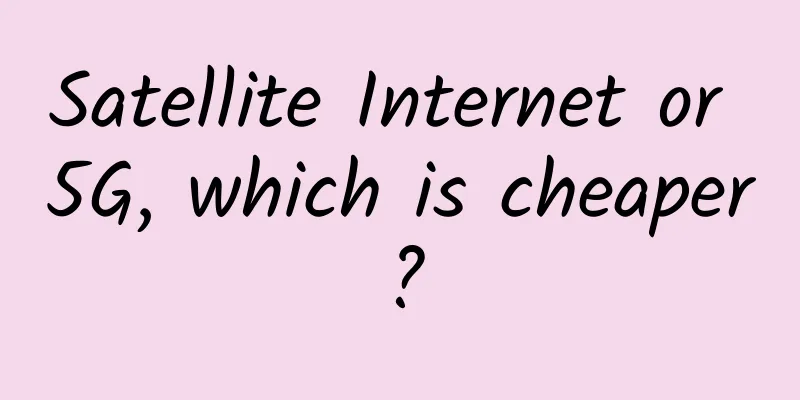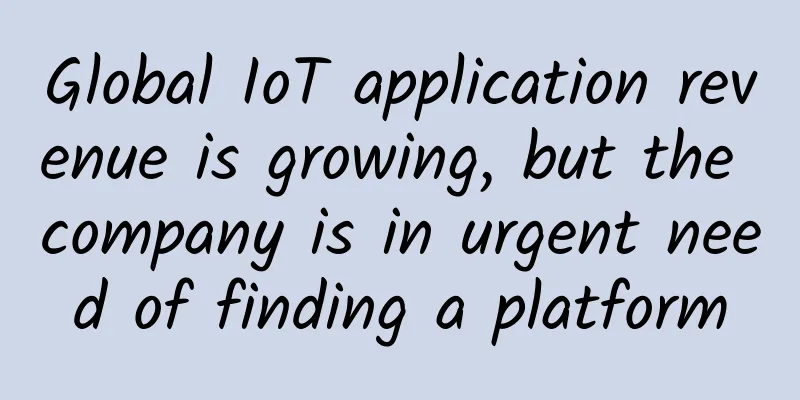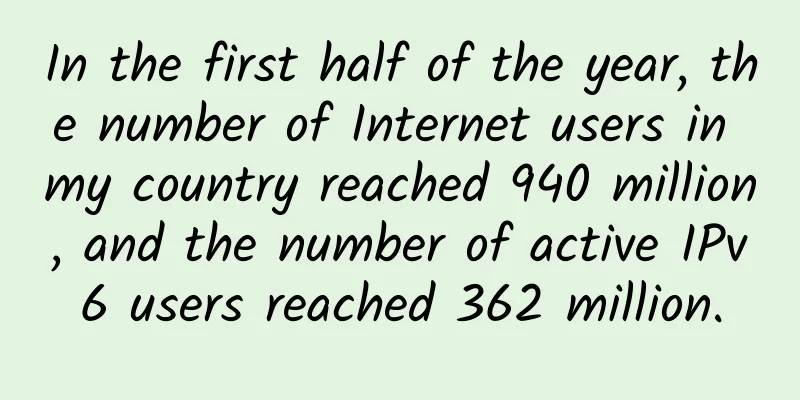Satellite Internet or 5G, which is cheaper?

|
Just as a manned spacecraft was sent into space, 60 Starlink satellites were sent into space. This little thing of going to the sky has become a daily routine for Musk.The reason why they are in such a hurry to launch satellites may be that the boasts they made are about to expire. In April this year, Musk said on social media that the Starlink version of satellite Internet (also known as space-based Internet) will be privately tested within 3 months, which is July this year. Screenshot of Musk’s Twitter Not only is Musk busy building satellite Internet in the United States, China's satellite Internet construction is also in full swing. In addition to the Hongyun Project and Hongyan Constellation Project that have already been implemented, at the two sessions on May 22 this year, Lei Jun also proposed to accelerate the development of satellite Internet and lower the threshold for private enterprises to enter satellite Internet. Previously, satellite Internet was also included in the scope of "new infrastructure" and received support at the national level. In addition to China and the United States, major space powers including the United Kingdom and Japan are also accelerating the launch of satellites. No wonder 2020 is called the first year of satellite Internet. Competition among countries in satellite internet is inevitable. However, from the perspective of the entire communications industry, the more critical competition is not between constellation plans, but between satellite internet and terrestrial 5G communications. From technology to cost to commercial returns, which one is better, satellite Internet or 5G? Another aspect that cannot be ignored is that satellite Internet is becoming increasingly closely related to national security. This article "Jia Zi Guang Nian" will compare and analyze satellite Internet and ground-based 5G in terms of communication capabilities, investment costs, commercial returns, etc., calculate the economic accounts, and explore the relationship between satellite Internet and 5G, as well as future application space. Faster return on investment on the ground When it comes to satellite Internet, Musk’s brilliance cannot be concealed. Previously, "Jia Zi Guang Nian" introduced SpaceX's Starlink project in the article "Behind 42,000 Satellites, an Overlooked Resource Competition", which will send 42,000 satellites into space and network them to achieve global coverage, high-bandwidth, and low-latency satellite communications. As of now, Starlink has sent the eighth batch of 60 satellites into space. The number of satellites in orbit has reached 482. A total of 1,400 satellites will be launched this year. Musk has thus become the person with the largest number of satellites in space. The eighth batch of Starlink satellites was launched In the view of Yang Feng, founder and CEO of Tianyi Research Institute, leading in quantity is not the key to its success. "Although I like SpaceX very much and have been learning from it, even if it has launched more than 480 satellites, it does not mean that it can eventually do this well." Behind this is an essence that all commercial aerospace companies must follow – achieving a closed business loop. In fact, high-bandwidth, low-latency satellite Internet can easily be considered a competitor to 5G. Will satellite Internet represented by Starlink pose a threat to 5G networks? "Jia Zi Guang Nian" compared satellite Internet and 5G in terms of communication capabilities, investment costs, and commercial returns. First of all, in terms of communication capabilities, Starlink satellite Internet can hardly shake the big tree of 5G.Theoretically, the peak download speed of 5G can reach 20Gbps, and in actual use the download speed is hundreds of M levels, with network latency less than 10 milliseconds. According to what Musk said when he announced the Starlink project in 2015, Starlink's goal is to provide Internet services with at least 1Gbps bandwidth to users in any region of the world. In other words, according to Musk, in actual operation, Starlink's communication capability will not be lower than 5G. However, a careful comparison reveals the differences. According to the draft 5G standard released by the International Telecommunication Union (ITU), a single 5G macro base station (communication base stations are divided into macro base stations and micro base stations, hereinafter referred to as macro base stations) must have at least 20Gbps downlink processing capacity. According to Starlink's data, the single-satellite communication capacity of its first phase of satellites is about 17Gbps~23Gbps, and the data throughput of the entire constellation is about 100Tbps (1T=1024G). This means that the communication capacity of a single Starlink satellite is equivalent to that of a ground base station. This judgment is almost the same as the view of Chen Shanzhi, deputy general manager of China Information and Communications Technology Group Corporation. According to his calculations, the current average spectrum efficiency of Starlink low-orbit satellites is about 2.5bit/s/Hz (spectral efficiency refers to the useful information rate, which is usually used to analyze the efficiency of digital modulation methods), which is the 3G level; while the current average spectrum efficiency of 5G is above 10bit/s/Hz, which is 4 times that of Starlink. If Starlink wants to replace 5G and achieve a communication capacity equivalent to 5G, it must at least provide satellites equivalent to the number of 5G base stations. According to China's plan, the number of domestic 5G base stations may exceed 10 million in the future. Therefore, the 42,000 satellites that sound impressive cannot actually match the communication capabilities of 5G. Xiang Ligang, chairman of the Information Consumption Alliance, told Jiazi Guangnian: "Starlink cannot reach the speed of 5G." In February 2019, Musk's SpaceX announced that it would build 1 million ground base stations for Starlink users. An industry insider did the math: using 1 million base stations to divide the entire constellation's 100Tbps communication capacity, when used simultaneously, each base station can only obtain 0.1G of capacity on average. Claims of Internet services with at least 1Gbps bandwidth per user do not hold up to scrutiny. The more explanations you give, the more questions you will raise. So you might as well just keep quiet. Since then, SpaceX has been secretive about many key details of the satellite, such as the number of beams, antenna power, and other information. Then, let’s do the math on the cost. If the goal is to become the mainstream communications infrastructure in the future, Starlink will generally be cheaper than 5G. The main construction costs of Starlink are three aspects: satellite manufacturing cost, satellite launch cost and supporting satellite base station construction cost. In terms of satellite manufacturing costs, according to data released by SpaceX earlier, the manufacturing cost of each Starlink satellite was US$1 million, but by the end of 2019, Musk revealed that as satellite manufacturing entered scale, its cost was less than US$500,000. In terms of launch costs, in May 2019, SpaceX used the "60 stars in one rocket" method to send 60 Starlink satellites into space. The Falcon 9 rocket launched this time was reused for the fourth time. The total launch cost was US$35.92 million, equivalent to a launch cost of approximately US$600,000 per star. According to this cost calculation, the cost of manufacturing and launching a satellite is about US$1.1 million, and the total cost of launching 42,000 satellites is about US$46.2 billion. However, with the scale development of manufacturing and launching, the cost is expected to be further reduced. The construction cost of the ground 5G network includes: the cost of backbone network fiber optic wiring and the cost of base station construction. Since Starlink will mainly serve North America in the early stages, the ground communications for comparison are also chosen in the United States. According to a 2017 study by Deloitte, if the United States wants to build a nationwide 5G network, it will need to invest $130 billion to $150 billion in fiber optic cabling alone. This means that, without taking into account the cost of base station construction, the cost of the ground backbone communication network is three times the cost of building the entire Starlink satellite, which seems to be more expensive at first glance. But if depreciation is taken into account, it is actually cheaper to build a ground backbone network. Because satellites in space have a limited lifespan, according to information disclosed by SpaceX, the lifespan of a Starlink satellite is about 5 years. In fact, among the 482 satellites launched since 2018, 6 satellites have encountered problems after entering orbit and cannot operate normally; in addition, 3 satellites are actively leaving orbit, in other words, they are heading towards self-destruction. Therefore, in the long run, when Starlink starts operating, a new batch of satellites will have to be launched every five years to fill the gap; while the lifespan of optical fiber is about 20 years, four times that of Starlink satellites. With a three-fold higher construction cost in exchange for a four-fold lifespan, optical fiber communication still has an advantage. After comparing the backbone communication networks, let’s look at the base station construction costs involved in both solutions. Xiang Ligang, chairman of the Information Consumption Alliance, told "Jia Zi Guang Nian" that the construction costs of the two types of base stations are almost the same. Because Starlink base stations also need to achieve signal penetration, there will be overlap with 5G base station equipment, and Starlink base stations need to be equipped with large antennas to receive signals from space, so their construction will be at least not lower than 5G base stations. When the construction costs are similar, it depends on the number of base stations corresponding to the two options. According to SpaceX's plan, Starlink needs to build 1 million base stations on the ground; and if the ground 5G network is to achieve nationwide coverage of the United States, more than 9 million base stations will need to be built (assuming that one base station covers a maximum of 1 square kilometer, and the land area of the United States is approximately 9.16 million square kilometers), which is 9 times that of Starlink. In the early days, due to the small scale of construction, the construction cost of a 5G base station was nearly $90,000 (RMB 600,000); after the construction quantity increased and the cost was diluted, the construction cost of a 5G base station was about $30,000 to $40,000 (RMB 210,000 to RMB 280,000). If the average construction cost is $50,000, it will cost $450 billion to build a 5G network covering the entire United States; and the construction cost of the base station of the Starlink project is about $50 billion. Therefore, the construction cost of a ground 5G base station is 9 times that of a satellite Internet base station. In fact, in addition to construction costs, both options have to consider operating costs. Because the depreciation of the satellite has been calculated before, the comparable operating costs of the two options mainly lie in the depreciation of the base station and electricity costs. Since 5G traffic is much larger than 4G, the power consumption of 5G equipment has increased significantly compared to 4G. According to calculations, the full-load power of a 5G single station is close to 3.7KW, which is nearly three times that of a 4G base station. Based on the domestic average electricity price of 0.55 yuan/kWh, the annual electricity bill for a single station is about 18,000 yuan (equivalent to 2,570 US dollars). Then, the total electricity cost of 9 million base stations is about more than 23 billion US dollars a year, which is a non-negligible expense. In the satellite Internet solution, since the total number of base stations is smaller, the depreciation and electricity costs are also lower. In summary, the overall construction and operation costs of satellite Internet are lower. However, in terms of commercial returns, terrestrial communication networks will pay back faster. Commercial returns mainly depend on usage price and number of users. Let’s look at satellite internet first. The cost of using Iridium, an early satellite communication project in the United States, was as high as $3 to $8 per minute, with monthly usage fees as high as hundreds of dollars. When it was acquired, the number of users was only 20,000. As for Starlink, according to Musk's idea, Starlink will provide services to 3% of users in remote areas of the United States in the future, with an estimated fee of US$80/month; this is much lower than the price of its predecessor Iridium, but slightly higher than the current US 5G price of US$70/month. If Starlink wants to enter the global market, it will face even more severe price competition. Take China as an example, the current 5G packages of operators can be as low as less than 100 yuan (about 15 US dollars) per month. Based on the above price standards, 3% of American users are about 10 million people, and the monthly fee is US$80 per person, which means that the annual satellite Internet revenue is US$9.6 billion. If we calculate based on SpaceX's total investment of US$96 billion in the Starlink project (US$46 billion for satellites and US$50 billion for base stations), it will take about 10 years to recover the investment. Looking at the ground level, although the fee charged to each user is lower and the construction cost is higher, it has one advantage - a very large user base. Taking the United States as an example, if 5G achieves nationwide coverage, the number of its users will reach about 300 million. Based on a monthly fee of US$70 per person, its annual revenue can theoretically reach more than US$250 billion, while its investment is more than US$600 billion, which means it will only take three years to recover its investment. Before Starlink and 5G are put into large-scale use, this comparison is more like a debate between different people with different opinions. Of course, this is just a rough calculation. In reality, there are various variables, such as increased expenses and the long-term accumulation of user growth. For example, in terms of 4G, China's three major operators have invested more than 800 billion yuan since 2013, but pure 4G revenue has not yet fully covered the costs. It's not as simple as replacing After all the calculations, it seems that satellite internet has no advantages. Will the shrewd Musk do a business at a loss? Of course not. In fact, satellite Internet and 5G are not simply substitutes. According to Musk's vision, Starlink is not going to steal the 5G business. On the contrary, Starlink can better provide communication services to remote areas that are not covered by 5G base stations. Musk's judgment is well-founded. Even though the domestic Internet boom has been booming for more than 20 years, more than 70% of the world's geographical space, involving 3 billion people, still has no Internet coverage. Traditional ground communication backbone networks are difficult to lay in harsh environments such as oceans, deserts and remote mountainous areas, and the operating costs are high. There are practical obstacles to extending and popularizing traditional communication backbone networks in areas with low Internet penetration. After telecom operators have established a deep foothold in the terrestrial communications business, remote areas are undoubtedly another tempting piece of cake. In the words of the Internet circle, this is the "sinking market" in the communications field. However, another question arises: households in remote areas that have difficulty in connecting to the Internet usually have low economic consumption capacity. Can they afford Internet fees of more than 80 US dollars per month? In the view of Li Yuan, vice president of Jiutian MSI, this question is not a random decision, "It is a question of input-output ratio." He said that a report showed that residents of more than half of the countries in the world spend more than $80 per month on Internet access. This is especially common in some African countries because of the low information density and high cost of laying ground networks. In contrast, satellite Internet has low investment and wide coverage, and can meet the communication needs of these sparsely populated areas. "There, only the really rich can afford to use the Internet." In addition, outdoor explorers, sea tourists and marine operators can only rely on satellite Internet for communication, and these users are relatively insensitive to communication prices. Judging from the location of the ground base stations in the current Starlink plan, it follows this point: Gateway 1 is located in North Bend, Washington, with a population of less than 6,000; Gateway 2 is located in Conrad, Montana, on the US border, with a population of just over 2,570; Gateway 3 is located in the more sparsely populated village of Merrill, Wisconsin, with a population of only 542. Of course, there are also individual stations in areas with a population of tens of thousands, such as Gateway 6 in Hawthorne, California, where SpaceX's headquarters is located.
The Starlink 2 gateway station is located next to an empty farmland. This means that 5G and satellite Internet have their own division of labor: 5G is suitable for providing communication services for densely populated areas such as cities, while satellite Internet is suitable for providing communication services for sparsely populated areas such as remote wilderness and seas. Therefore, the competition between satellite interconnection and 5G may only appear in the headlines of reports. Satellite Internet and ground-based 5G communications may have a better combination: satellite Internet can serve as the backbone network for global ground communications, replacing expensive and extremely difficult to build communication infrastructure such as submarine optical cables; in addition, its low latency advantage can also be applied to the financial field, providing global long-distance data transmission for time-sensitive users. The real "replacement" for 5G may be 6G.Xiang Ligang, chairman of the Information Consumption Alliance, believes that Starlink cannot replace 5G, but it should not be underestimated because it is likely to be part of the future 6G. The integration of space and earth is an important direction of 6G. With the widespread application of 5G and the development of artificial intelligence, various civil aircraft, drones and spacecraft will operate and stay in the sky, and today's ground-based communication networks cannot provide reliable communication for these devices. Satellite Internet can more conveniently provide communication networks for these flying devices. Suddenly I am no longer worried about satellite Internet snatching 5G’s business, and I’m even looking forward to its early arrival - in the future I won’t have to worry about my cell phone having no signal when I take a plane or go on a hike. More than just business Even so, one cannot help but wonder: the income from satellite Internet is unstable in any way. If tourists do not go out during the off-season, or if user expansion is slow, won’t there be no income? Another logic behind SpaceX's development of satellite Internet is indeed worthy of attention from China's aerospace industry - eyeing the military market pie. In the long run, under the general trend of "integrated space and ground" networks, the commercial value of satellite Internet will become increasingly greater, but the survival pressure in the short term means that it needs to find a suitable payer. Starlink, which has not yet entered internal testing, has now won its first major customer - the US military. Just on May 20 this year, foreign media Spacenews reported that the US Army and SpaceX signed an agreement-the US Army will test Starlink within three years to evaluate whether it meets the data transmission needs of the US military.
Musk in talks with the U.S. military The problem now is that Starlink lacks flexibility and compatibility between hardware and software when docking with the US military's communication system. The agreement reached this time will evaluate the cost of transmitting data from Starlink satellites to ground stations and the security of the data. The agreement is called a "cooperative research and development agreement," which is often used by the U.S. military to test private technology before formally purchasing it. Not only that, as early as December 2019, the U.S. Air Force became interested in Starlink and allocated $28 million in research funds to SpaceX. This money is just a "greeting gift" to test military communications based on Starlink. Once the test results are good, the U.S. military will continue to purchase SpaceX's services and sign larger contracts. Businessman Musk not only took over NASA, but also became a guest of honor of the military. Why is the military so interested in Starlink? Military expert Yin Zhuo explained the reason: If on the battlefield, Starlink can observe the target for a long time and transmit high-precision images directly to the command post through real-time communication. The command post distributes them to various combat units, which will be of great help to the combat. In addition, if the missile is controlled in real time by Starlink satellites, the target can be hit accurately. In this way, the missile equipment will be completely dependent on Starlink satellites, and the cost of the missile will be greatly reduced. Simply put, Starlink's wide coverage and low-latency communication capabilities will have a significant impact on future combat forms. To put it more directly, satellite Internet is part of national security strength. China also launched its own "Starlink" project in 2018: the "Hongyun Project" and the "Hongyan Constellation" project.The "Hongyun Project" is undertaken by the Second Academy of China Aerospace Science and Industry Corporation. It plans to build a constellation consisting of 156 satellites, which will be networked and operated in an orbit 1,000 kilometers above the ground to build a satellite broadband global mobile Internet network. After completion, it will realize global Internet access services without blind spots. The "Hongyan Constellation" project is led by the China Aerospace Science and Technology Corporation. It is a global system composed of 300 low-orbit small satellites with all-weather, all-time and real-time two-way communication capabilities under complex conditions. It can monitor and manage ships sailing in the sea, track and control global aviation targets to ensure flight safety, and enhance the Beidou navigation satellite system and improve the positioning accuracy of Beidou navigation satellites. The forces behind the two low-orbit satellite constellation plans are both state-owned enterprises. Their role is not only to provide mobile Internet services, but also to track and control aviation targets and improve navigation accuracy. Satellite Internet, which seems to have no advantages in civilian life, plays a vital role in national security. |
<<: Breaking the shackles of proprietary systems: the open path to 5G networks
>>: 5G spectrum technology has made a breakthrough, and battery life has soared
Recommend
Why has 5G, which has been hyped for so long, suddenly stopped working? How far are we from the 5G era?
Every time 5G is mentioned, we feel like we are t...
What is active monitoring without embedding code? Technology exploration behind improving user experience
In the Internet age, whoever controls the users c...
What hurdles do 5G mobile phones need to overcome before they can be launched on the market?
Recently, more and more mobile phone manufacturer...
Wuhan East Lake High-tech Zone built a video conferencing system in seconds to improve work efficiency
Under the tough order of "admit everyone who...
P2P Confession | I don’t produce content, I’m just a route planner for content delivery
When people mention P2P now, they will think of t...
Market forecast: China's smart home market will reach US$48.2 billion in 2027
[[422668]] According to market research firm Rese...
HostUS: VPS in 7 data centers in Los Angeles starting at $16 per year, with optional OpenVZ/KVM architecture
HostUS has a low presence now, but it was very po...
All IPV4 addresses are exhausted, and you still don’t know what it is?
On November 26, 2019, the last IPv4 address in th...
Can operators’ equity incentives motivate core employees?
[[384495]] In modern enterprises, equity incentiv...
ProfitServer Netherlands VPS 50% off, unlimited traffic VPS monthly payment starts from $2.88
ProfitServer is a Russian hosting company founded...
5G improves network determinism and supports digital transformation
[[326206]] Operators see enterprise and industria...
Why the United States wants to delist China's three major operators
According to the Russian Satellite Network, regar...
VIAVI Demonstrates Validation, Verification and Visibility Solutions for 5G at Mobile World Congress 2019
VIAVI Solutions, Inc. (NASDAQ: VIAV) will showcas...
12 minutes to help you understand the OSI seven-layer model and the TCP/IP five-layer model
1. OSI Reference Model 1. Origin of OSI OSI (Open...
A chart showing the first phase 5G deployment schedule of the four major US operators
5G is accelerating. 3GPP has completed the non-st...









